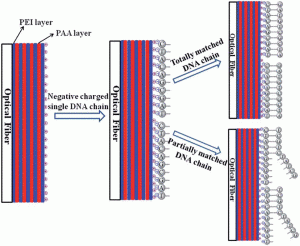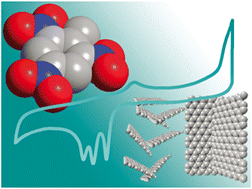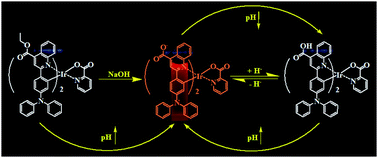 Take a look at this great list of selected HOT articles we’ve recently published in Analyst! They cover a wide range of topics including adsorptive stripping voltammetric determination of antidepressants, FRET-based sensors for ratiometric detection of iron, and direct monitoring of chemical transformations by thin layer chromatography combined to nanoparticle-assisted laser desorption/ionization mass spectrometry.
Take a look at this great list of selected HOT articles we’ve recently published in Analyst! They cover a wide range of topics including adsorptive stripping voltammetric determination of antidepressants, FRET-based sensors for ratiometric detection of iron, and direct monitoring of chemical transformations by thin layer chromatography combined to nanoparticle-assisted laser desorption/ionization mass spectrometry.
Impact of charge state on gas-phase behaviors of noncovalent protein complexes in collision induced dissociation and surface induced dissociation
Mowei Zhou , Shai Dagan and Vicki H. Wysocki
Analyst, 2013, Advance Article
DOI: 10.1039/C2AN36525A
Amide I vibrational mode suppression in surface (SERS) and tip (TERS) enhanced Raman spectra of protein specimens
Dmitry Kurouski , Thomas Postiglione , Tanja Deckert-Gaudig , Volker Deckert and Igor K. Lednev
Analyst, 2013, Advance Article
DOI: 10.1039/C2AN36478F
Adsorptive stripping voltammetric determination of imipramine, trimipramine and desipramine employing titanium dioxide nanoparticles and an Amberlite XAD-2 modified glassy carbon paste electrode
Bankim J. Sanghavi and Ashwini K. Srivastava
Analyst, 2013, Advance Article
DOI: 10.1039/C2AN36330E
Direct monitoring of chemical transformations by combining thin layer chromatography with nanoparticle-assisted laser desorption/ionization mass spectrometry
Chun-Chi Chen , Yung-Lin Yang , Chun-Lin Ou , Chih-Hung Chou , Chih-Chuang Liaw and Po-Chiao Lin
Analyst, 2013, Advance Article
DOI: 10.1039/C2AN36423A
A highly selective and efficient single molecular FRET based sensor for ratiometric detection of Fe3+ ions
Narendra Reddy Chereddy , Sathiah Thennarasu and Asit Baran Mandal
Analyst, 2013, Advance Article
DOI: 10.1039/C3AN36577H

Antibody orientation on biosensor surfaces.
We also have an interesting minireview on antibody orientation on biosensor surfaces. Han Zuilhof and colleagues from The Netherlands discuss the most recent approaches for immobilzation of antibodies on surfaces and review protein modification methods applicable for oriented antibody immobilization. To read the full article, please access the link below:
Antibody orientation on biosensor surfaces: a minireview
Anke K. Trilling , Jules Beekwilder and Han Zuilhof
Analyst, 2013, Advance Article
DOI: 10.1039/C2AN36787D

























